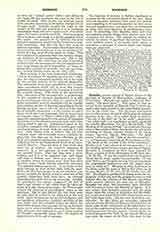

Memphis, ancient capital of Egypt; diocese of the province of Arcadia or Heptanomos, suffragan of Oxyrynchus. Memphis was called in Egyptian Mennophir, “the good place”. This name, at first reserved to the pyramid of Pharaoh Pepi I (sixth dynasty) afterward passed to the surrounding quarter, then to the whole city. The Egyptian inscriptions give it other names, several of which properly indicate quarters of the city. It is called Aneb or Aneb-u, “the city of the wall” or “of the walls”; Aneb-hadj, “the white wall”, an appellation properly signifying the citadel (Herodotus, III, 91); Ha-ka-Ptah, “the dwelling of the person of Ptah”, an expression first applied to the temple of Ptah, then to the city and which according to certain authors became in the Greek tongue Aiguptos, “the good crown”; Khu-to-ui, the “light of the two countries”, i.e. of Upper and Lower Egypt; Ha-ka-knum-nuteru, “the house of the worship of the divine architects”; Ma-kha-to-ui, “the balance of the two countries”, i.e. the dividing point between Upper and Lower Egypt. Memphis is considered to have been founded by Menes, a native of Thini (Herodotus, II, 99; Diod. Sic., I, 50, 51, 67). It was the capital of several dynasties (third, fourth, sixth, eighth, twenty-fourth). It was after Thebes, says Brugsch, the city “concerning which the epigraphical monuments and the papyri have most to teach us”. Memphis is often mentioned in the Bible under the name of Mof or Nof (Osee, ix, 6; Is., xix, 13; Jer., ii, 16; xlvi, 14, 19; Ezech., xxx, 13, 16). The Prophets predicted in strong terms the destruction of this city, and the prophecies were so well fulfilled that the scholars of the French expedition could scarcely discover the true site of Memphis. Memphis has often, but incorrectly, been identified with the ancient Cairo, the Babylon of Egypt. It is now certain that Memphis extended into the plain where stand the villages of Bedrashen and Mit-Rahinet, on the west bank of the Nile, about twelve and a half miles from Cairo. Its size must have been considerable. In this plain are sometimes exhumed colossal statues like that of Rameses II; but there remains none of the monuments of Memphis unless we except the neighboring tombs of Saqqarah, where its inhabitants were formerly buried. Linant Pacha recovered the great dike built by the founder Menes to turn aside the course of the Nile; this must be the great dike of Cocheiche at present utilized. According to Revillout in “Le Nil” (1880), 19, 25, “terrible floods must have buried the great cities of Thebes and Memphis under enormous masses of clay”. The great Egyptologist Mariette sees in this destruction of Memphis the verification of the prophetic predictions. “There is no city”, he writes, “whose end was so lamentable as that of Memphis. It was formerly the chief of cities, the pride of Egypt. It astonished the world by the number and the magnificence of its buildings. Today it is not even a ruin. Thus is fulfilled the word of the prophet (Jer., xlvi, 19): “Furnish thyself to go into captivity, thou daughter inhabitant of Egypt, for Memphis shall be made desolate and shall be forsaken and uninhabited” (Mariette, “Voyage en Haute-Egypte”, 1878, I, 31).
See in Le Quien, II, 585-88 (Gams, 461) the list of the known bishops of Memphis. John, the first on this list, was one of the opponents of St. Athanasius (Athan., “Apol. de fuga sua”; “Apol. contra Arianos”; “Epist. ad solitarios”; Sozomen, II, xxxi). Antiochus of Memphis took part in the Council of Nicaea. Palladius (Hist. laus., LXXVI) and Rufinus (Vit. Patrum, II, v) state that they saw in the neighborhood of Memphis and Babylon innumerable multitudes of monks. Some Synaxaria mention for October 5, the holy virgin St. Hierais of Memphis (Delehaye, “Synaxarium Eccles. Constantinop., Propylaea ad Acta Sanctor.” 112, 8).
S. SALAVILLE

